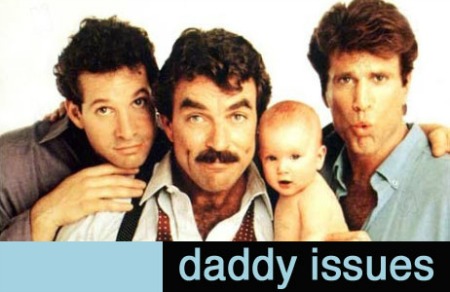Over the last two months, I’ve written more than 20,000 words (!) about male primary caregivers in popular culture. I hope I’ve illustrated that while the rise in non-stereotypical portrayals of men is in some ways a step forward, it’s also often just another means by which the mainstream media reinforces gender norms — often at women’s expense.

When I started this series, I thought the increase in narratives about single and stay-at-home fathers reflected a genuine sociological phenomenon, because more men than women lost jobs in the recession and became stay-at-home dads as a result. However, I soon discovered that while the number of men who take care of their kids full-time has doubled over the last 12 years, it’s still just 176,000 people, or 0.8 percent of the population, according to Philip N. Cohen’s interrogation of the stats. (This rises when dads who work part-time are included, but only to 2.8 percent.) Plus, men are returning to work more quickly than women, making this much-discussed "trend" little more than a blip. What’s more, as Bryce Covert pointed out in a Forbes.com column, it was only ever a partial victory considering that being a stay-at-home parent wasn’t a choice for many of these men, just as it isn’t a choice for many women.
There’s no doubt that men’s stories about the challenges of parenting are privileged over women’s, with TVDads.com putting the number of single dads on TV in 2012 at 272. (They don’t say how many single moms there are, but anecdotal evidence and the fact that there’s been an explosion in shows (and movies) centered on male primary caregivers in the last couple of years would suggest it’s far fewer.)
In the current issue of Mslexia, artist and author Judy Chicago is quoted as saying: “It’s aggravating that when women write about female characters it’s considered women’s literature and when men write about male characters it’s considered universal literature.” When it comes to TV, it’s assumed that men won’t relate to female characters, as if our experiences are niche. Yet the very problems we see men wrestling with in the current crop of dad-centric shows (from the drudgery of domestic tasks to the expense of alternative childcare) are issues women have been raising for decades. It’s a sad reflection of our society that these problems are only considered relevant to all when (white, cis, able-bodied) men are dealing with them.
Of course we always have the option to turn off or walk out of something that fails the Bechdel test, but not only does that not solve the fact that so much pop culture is geared towards men, it leaves us with little to watch. Worse, it perpetuates restrictive gender ideals in an insidious way. (The most shocking thing for Geena Davis when she started her research into the paucity of female characters in family films was that when she’d ask her friends if they’d noticed a movie didn’t contain a single female character, they never had.)
The representation of women in pop culture and the media in general may be lacking, both in quality and quantity, but it’s great that women are increasingly protesting this — and hopefully things will eventually start to change. While the portrayal of women in narratives about male primary carers is often poor, at least these shows and movies are presenting a challenge to traditional ideas about masculinity and fatherhood, imprinting the idea that men should participate in childcare and domestic tasks on a new generation.
I’ve learned a lot during this series and rambled on at length, but there’s still so much more I could have explored. I’ve barely scraped the surface of advertising, one of the most pernicious pushers of gender stereotypes, and ignored whole genres I don’t enjoy (sci-fi, fantasy, animation) but about which I’m sure fascinating conclusions could be drawn about the representation of male primary caregivers.
Not to get too Gywneth-Paltrow-at-the-Oscars, but I’m so grateful to have had the chance to write these posts, and for those of you who took the time to read and share your feedback. Your comments often forced me to think harder and to keep trying to be more inclusive. In retrospect, I wish I’d delved into the topic of disabled stay-at-home/single fathers (or stay-at-home/single fathers of disabled children) in more detail — even if that meant venturing out of the mainstream.
While mostly analyzing American media seemed apropos given the restricted scope of the series and its (alleged) reflection of changes in U.S. society, it would have been interesting to consider male primary-caregiver culture from other countries as well. There are shows I clean forgot to talk about, including Glee and Veronica Mars, which feature great examples of working-class fathers, and the contrast in how stay-at-home grandparents of different genders are represented would no doubt have yielded some interesting conclusions, especially as the intersection of ageism and sexism is underexplored in general.
I’m not sure what the future holds for pop culture’s dads, but past trends suggest that the number of shows and movies about male primary caregivers will taper off to be replaced by a new set of stories about (mostly white, able-bodied, upper-middle-class, cisgender, straight) men. I'm still optimistic that we'll eventually see a wide range of stories portraying more diverse experiences, but I won't be holding my breath.
Previously:Daddy Issues archives.
















